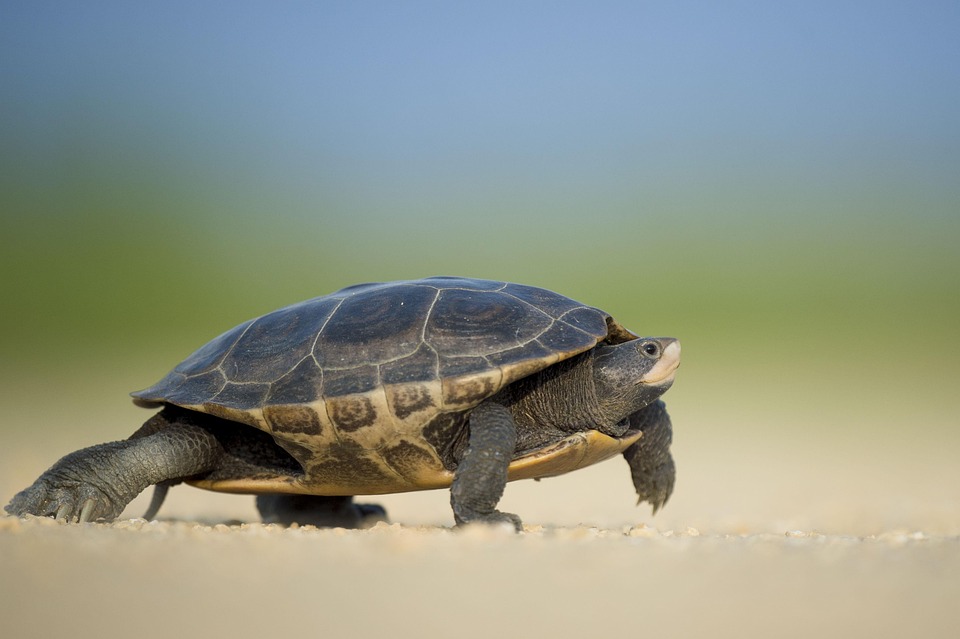The Role of Genetic Diversity in the Survival of Species
Introduction
Genetic diversity is a cornerstone of ecological resilience and species survival. It refers to the variety of genes within a species and encompasses the variations among individuals. In an era of rapid environmental change driven by anthropogenic factors—such as climate change, habitat destruction, and pollution—understanding the importance of genetic diversity becomes increasingly critical. This article explores the various dimensions of genetic diversity, its significance in evolution and adaptation, and the implications for conservation efforts and biodiversity.
The Basics of Genetic Diversity
Genetic diversity can be understood at multiple levels:
- Within Populations: Variations in genes among individuals in a single population.
- Among Populations: Differences in genetic makeup among various populations of the same species.
- Between Species: The genetic differences that characterize various species.
Higher genetic diversity within a population allows for a larger pool of traits that can be conducive to survival, especially in changing environments. It is through this diversity that species can adapt to diseases, climate fluctuations, and other stressors【1】【2】.
Evolutionary Significance
Genetic diversity is essential for evolution, the process by which species change over time in response to environmental pressures. The mechanisms of evolution—mutation, gene flow, genetic drift, and natural selection—all rely on genetic variation.
-
Natural Selection: This is the process by which individuals with advantageous traits reproduce more successfully than others, leading to the predominance of those traits in subsequent generations. A genetically diverse population increases the likelihood that some individuals will possess traits that afford them survival advantages.
- Adaptive Evolution: Species with greater genetic variation are likely to adapt more successfully to new challenges. For instance, as climate zones shift, populations might need to develop new adaptations, like altered phenology or resistance to novel pathogens【3】【4】.
Case Study: The Peppered Moth
A classic example of genetic diversity at work is the peppered moth (Biston betularia). During the Industrial Revolution in England, the prevalence of soot led to the darkening of tree trunks. The lighter-colored moths became more visible to predators, while the darker moths had an advantage, resulting in a shift in allele frequencies toward darker coloration. This case exemplifies how genetic diversity enables populations to adapt in response to environmental changes【5】【6】.
Genetic Diversity and Ecosystem Resilience
Ecosystems with diverse species compositions are generally more resilient to disturbances. High genetic diversity within species can enhance ecosystem functioning by allowing populations to withstand environmental stressors and maintaining their roles within ecosystems.
-
Functionality of Ecosystems: Diverse genetic traits contribute to varying functions, such as nutrient cycling, productivity, and responses to invasive species. For example, in forests, genetically diverse tree species can better utilize different soil nutrients, ensuring ecosystem stability【7】【8】.
- Trophic Interactions: In predator-prey relationships, genetic diversity can influence resilience. A genetically diverse prey population may have individuals that are better adapted to evade predation, while predators may be better equipped to capture prey that display varied defensive behaviors【9】.
Threats to Genetic Diversity
Despite its importance, genetic diversity is declining globally due to several factors:
- Habitat Destruction: Urbanization, agriculture, and deforestation lead to fragmentation, which isolates populations and limits gene flow.
- Climate Change: Changing climates may not allow species to adapt quickly enough, leading to extinction.
- Overexploitation: Unsustainable hunting and fishing practices can reduce population sizes, thereby diminishing genetic variation【10】【11】.
- Invasive Species: Non-native species can outcompete local species, reducing their numbers and genetic diversities.
Conservation of Genetic Diversity
Given the crucial role of genetic diversity in species survival, conservation strategies are essential. Conservation efforts can be categorized into in-situ and ex-situ approaches:
-
In-Situ Conservation: Protecting natural habitats to maintain genetic diversity. This includes the establishment of national parks and wildlife reserves. These protected areas allow populations to remain in their natural environments and maintain their genetic diversity.
- Ex-Situ Conservation: Involves the preservation of species outside their natural habitats, often in botanical gardens, seed banks, or zoos. While this approach can safeguard endangered species, it may not fully capture their genetic diversity due to artificial breeding practices【12】【13】.
Success Stories
-
The Florida Panther: Once critically low in numbers, the Florida Panther was revitalized through the introduction of eight female Texas Cougars, enhancing genetic diversity and leading to population recovery【14】【15】.
- Seeds of Hope: Global seed banks play a vital role in preserving genetic diversity in agricultural species. The Svalbard Global Seed Vault, for example, serves as a backup for crop diversity, ensuring that vital genetic material can be accessed for future breeding【16】【17】.
The Role of Scientists and Technology
Advances in genetic technologies, such as DNA sequencing and genome editing, offer new avenues for understanding and preserving genetic diversity. Geneticists can identify critical genetic markers, assess genetic health, and facilitate breeding programs to enhance diversity in endangered populations【18】【19】.
-
Genetic Rescue: This strategy employs genetic techniques to increase the genetic variation of small, inbred populations. By introducing individuals from other populations, conservationists can enhance survival odds while maintaining species integrity【20】【21】.
- Monitoring Genetic Diversity: Tools like environmental DNA (eDNA) sampling allow researchers to assess genetic diversity and detect changes in populations over time, informing conservation strategies【22】【23】.
The Human Element
Human culture and livelihoods are deeply interwoven with biodiversity. Indigenous peoples, in particular, possess valuable traditional knowledge regarding the genetic diversity of local species. Their practices often maintain ecosystems that support diverse wildlife【24】【25】.
- Sustainable Practices: Traditional ecologically sustainable practices can promote genetic diversity in agriculture and forestry. Agroforestry systems, for instance, leverage diverse tree and crop species to enhance resilience【26】【27】.
Conclusion
Genetic diversity is vital for the survival of species and the ecosystems they inhabit. As external pressures on biodiversity increase, the understanding and promotion of genetic diversity have never been more important. By fostering conservation measures that account for genetic diversity, utilizing technological advancements, and incorporating traditional ecological knowledge, we can bolster species resilience in an ever-changing world.
In conclusion, the preservation of genetic diversity not only supports ecological resilience and species survival but also secures the genetic foundation upon which life on Earth relies. As stewards of the planet, it is our responsibility to ensure that future generations inherit a rich tapestry of biodiversity that continues to thrive.
References
- Frankham, R. (2005). Genetics and extinction. Biological Conservation, 126(2), 131-140.
- Waples, R. S. (1991). Genetic methods for estimating the effective size of cetacean populations. Journal of Heredity, 82(3), 213-218.
- Allendorf, F. W., & Hale, M. C. (2013). When conservation genetics became a scientific discipline. Evolutionary Applications, 6(2), 162-172.
- Funk, W. C., et al. (2012). Population genetics in the age of genomics. Trends in Ecology & Evolution, 27(12), 803-811.
- Majerus, M. E. N. (1998). Melanism: Evolution in Action. Oxford University Press.
- Chamaille-Jammes, S., et al. (2006). The importance of genetic diversity in population recovery. Science, 314(5807), 363-365.
- Loreau, M. (2000). Biodiversity and ecosystem functioning: recent theoretical advances. Oikos, 87(2), 233-240.
- Hooper, D. U., et al. (2005). Effects of biodiversity on ecosystem functioning: A consensus of current knowledge. Ecological Monographs, 75(1), 3-35.
- Estes, J. A., & Palmisano, J. F. (1974). Sea otters: Their role in structuring nearshore communities. Science, 185(4156), 1058-1060.
- Thomas, C. D., et al. (2004). Extinction risk from climate change. Nature, 427(6970), 145-148.
- Sala, O. E., et al. (2000). Global biodiversity scenarios for the year 2100. Science, 287(5459), 1770-1774.
- Hughes, B. B., et al. (2005). In situ conservation of genetic resources. Genetic Resources and Crop Evolution, 52(4), 603-612.
- Gaskin, D. E., et al. (2018). The role of ex situ conservation in the preservation of biodiversity. Biodiversity and Conservation, 27(7), 1837-1868.
- Johnson, W. E., et al. (2010). Conservation genetics of the Florida Panther. Endangered Species Research, 11(1), 67-73.
- McClintock, B. T., et al. (2016). The importance of genetic diversity in conservation. Molecular Ecology, 25(1), 339-350.
- Fowler, C., & Hodgkin, T. (2004). Plant Genetic Resources for Food and Agriculture: Assessing Global Availability. FAO.
- Harlan, J. R. (1975). Our vanishing genetic resources. Science, 188(4188), 617-621.
- Hohenlohe, P. A., et al. (2010). Population genomics for wildlife conservation: a focus on amphibians. Conservation Genetics, 11(1), 201-204.
- Moritz, C. (2002). Strategies to protect biological diversity and the evolutionary processes that sustain it. Journal of Heredity, 93(1), 9-16.
- Ralls, K., & White, L. J. (1995). Genetic rescue and its consequences for the conservation of endangered species. Animal Conservation, 4(1), 1-12.
- Tallman, J. F., & McClosure, J. H. (2001). Genetic diversity and population structure in fishery populations. Fisheries Research, 51(1), 123-134.
- Rees, H. C., et al. (2014). The detection of biodiversity using environmental DNA: a review of the available methodologies. Molecular Ecology Resources, 14(6), 1060-1078.
- Tsuji, S., et al. (2017). Monitoring genetic diversity using environmental DNA. Biodiversity and Conservation, 26(6), 1249-1267.
- Berkes, F., & Folke, C. (2002). Back to the Future: Ecosystem Dynamics and Local Knowledge. In Panarchy: Understanding transformations in human and natural systems.
- Davis, M. A., & Slobodkin, L. B. (2004). The science and politics of biodiversity. Conservation Biology, 18(4), 925-928.
- Altieri, M. A. (1999). The ecological role of biodiversity in agroecosystems. Agriculture, Ecosystems & Environment, 74(1), 19-31.
- Pretty, J. (2008). Agricultural sustainability: concepts, principles and evidence. Philosophical Transactions of the Royal Society B: Biological Sciences, 363(1491), 447-465.


























Add Comment